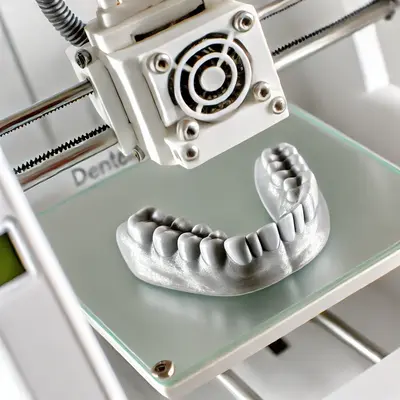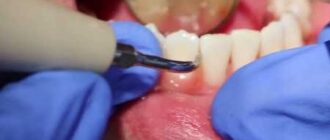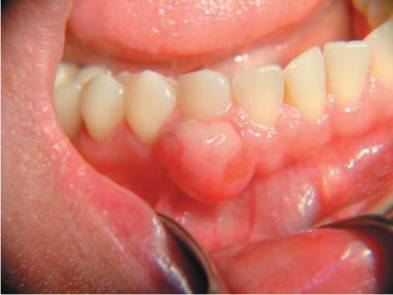Regenerative dentistry is no longer a futuristic concept—it’s here, and it’s reshaping how we think about oral health. From growing new dental tissues to bioengineering entire teeth, breakthroughs in regenerative dentistry are pushing the boundaries of what we thought was possible. This article dives into the latest advancements, scientific facts, and the real-world impact of regenerative therapies, all while demystifying the technologies that are making it happen.
Understanding the Need: Why Regeneration?
Tooth decay and periodontal disease are among the most prevalent health problems in the world. The World Health Organization estimates that 3.5 billion people are affected by oral diseases globally. Traditional dental treatments like fillings, crowns, and implants address the damage, but they don’t restore the lost biological function of the natural tooth. Enter regenerative dentistry, a field dedicated to not only repairing but regenerating tissues, and ultimately restoring full function.
Tooth loss has often been considered permanent, with replacement options that are either artificial (implants) or cumbersome (dentures). With advancements in regenerative dentistry, we’re moving towards therapies that could someday eliminate the need for these replacements altogether.
The Science Behind Dental Regeneration
Regenerative dentistry builds on cutting-edge research in stem cells, tissue engineering, and biomaterials. The goal is to use the body’s natural healing capabilities to repair or even grow new teeth.
- Stem Cell Therapy: Dental stem cells, particularly those derived from the pulp of baby teeth and wisdom teeth, are showing immense potential for regenerating dental tissues. Recent studies in 2023 have demonstrated success in using stem cells to stimulate the growth of dental pulp—a critical milestone in making teeth “alive” again.
- Scaffolding Techniques: Another breakthrough has been the development of biodegradable scaffolds that serve as a template for the growth of new dental tissue. These scaffolds, once implanted, gradually break down as new cells grow, providing a supportive structure during the healing process.
- 3D Bioprinting: One of the most promising approaches involves 3D bioprinting to create a custom tooth structure. While we’re still in the early stages of fully printed teeth, 2022 saw the successful bioprinting of dental tissues that can help replace damaged areas within existing teeth.
Real-World Applications: Where Are We Now?
Pulp Regeneration: For patients suffering from extensive decay, pulp regeneration offers a revolutionary alternative to root canals. Instead of removing all of the infected material and filling the tooth with inert substances, pulp regeneration therapies can actually restore living tissue. This allows the tooth to retain sensation and, in some cases, even continue developing.
Case Example: In a recent clinical trial, patients with severe pulp necrosis underwent a stem cell-based regenerative procedure. Within months, they experienced not only pain relief but also signs of tissue regeneration. One participant stated, “It was surreal—I expected to lose the tooth, but now it feels alive again.”
Periodontal Regeneration: Gum disease is the leading cause of tooth loss in adults. Modern regenerative techniques focus on restoring both soft tissue and bone that have been lost due to periodontitis. Techniques using growth factors and collagen matrices have been shown to regrow bone by 30-40% in affected areas, which is a game-changer for severe cases.
Complete Tooth Regeneration: This is the holy grail of regenerative dentistry. Researchers are working on bioengineering whole teeth using stem cells and growth factors. While full tooth regeneration is not yet available in clinical practice, animal trials have shown promising results, with mice and rabbits successfully growing functional teeth. Optimists predict that within the next decade, similar techniques could reach human trials.
The Cost of Cutting-Edge Dental Care
While regenerative treatments are promising, they’re not cheap. Current pricing varies significantly depending on the treatment type and where you live. Here’s a look at what regenerative dentistry could cost you:
| Treatment | Estimated Cost (USD) |
|---|---|
| Pulp Regeneration | $1,500 – $3,000 |
| Periodontal Regeneration | $2,000 – $5,000 per area |
| Stem Cell Harvesting (Future) | Expected $5,000+ |
| 3D Bioprinting (Future) | Not yet available |
These procedures represent a significant investment, but many patients view the costs as worthwhile for the potential of natural function and long-term health. It’s important to note that as technology matures, costs are expected to decrease, making these therapies more accessible.
Limitations and Considerations
Despite the excitement, regenerative dentistry faces certain limitations. For one, stem cell therapies require a source of viable cells—often harvested from baby teeth or wisdom teeth, which aren’t always available. Additionally, there’s the concern of immune rejection in cases where cells are not from the same individual, though research into immune compatibility is making progress.
Another key challenge is time. Regenerative treatments, unlike getting a crown or an implant in a single visit, can take months or even years to fully complete. Patients need to be prepared for a long-term commitment to achieve these regenerative outcomes.
Advice from Our Editorial Team
If you’re excited about the potential of regenerative dentistry, you’re not alone. The idea of growing back lost tissues or even entire teeth is as appealing as it is groundbreaking. However, it’s essential to take a cautious yet optimistic approach.
Talk to your dentist about options that are available now, and consider participating in clinical trials if you’re eligible—many trials are actively seeking participants who want to be at the forefront of dental innovation. Remember that taking care of your teeth naturally through good oral hygiene, a healthy diet, and complete abstinence from smoking or alcohol can minimize the need for these advanced interventions in the first place.
The future of dentistry looks regenerative, and with it comes the hope that the next generation will have a much different relationship with their oral health—one focused on restoration rather than replacement.






